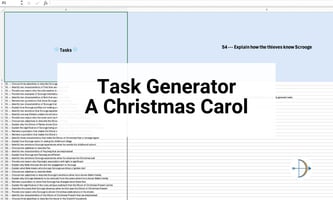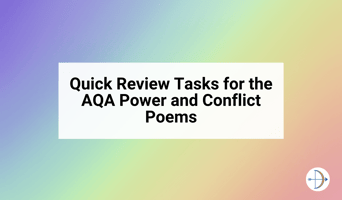Nine Simple ‘Engage’ Tasks
A week or so ago, I wrote a short post on simple review activities – click here to read it. This time around, I’ve put together a list of nine simple ‘engage’ tasks for students to occupy themselves with at the starts of lessons. Once again, no planning or resources are necessary. They’re constructed to lead into further discussion and debate. Hope they’re useful. Feedback always welcome.
1. Quotation retrieval
Ask students to make a start on the reading for the lesson (e.g. the beginning of a new chapter) and then get them to retrieve quotations based on a handful of statements or plot points.
2. Correct a passage
Take a decent paragraph of commentary or analysis from a book or website (e.g. the BL website), edit it so there are a few errors (e.g. spelling and capitalisation mistakes), and then get students to make the corrections.
3. Correct the spellings
Misspell five or so tricky or unfamiliar words and get students to copy and correct them (or mix them up with words that are already spelt correctly).
4. Make connections
Choose a relevant image and get students to make a list of connections with the text they are studying (e.g. a picture of a deserted street for Jekyll and Hyde).
5. Complete the quotation
Pick five or so incomplete quotations from a text – either recently studied or read a while ago – and ask students to finish them off.
6. Identify the quotation
Pick a quotation from a current or previous text, display it on the board, ask students to locate the page number and then discuss its significance.
7. Vocabulary challenge
Create a list of relevant tier two or tier three words and ask students to use them to write a series of their own short sentences.
8. Thinking back
Take a big question from a previous lesson, display it on the board and get students to make brief notes on everything they can remember.
9. Contentious statement
Display a contentious statement on the board – something connected to the lesson itself – and get students to think about it before moving onto a discussion (e.g. Gerald from AIC did nothing wrong).
Click here to access a document with all nine activities on.
Click here to access some example slides – they’re based on some of the extracts from the AQA reading resource anthology – y’know, the one with the big ol’ raven on it.
Thanks for reading –
Doug


.jpg?width=50&name=douglas-wise%20(2).jpg)




